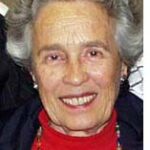
SAN DIEGO — Cellist Alisa Wallerstein’s dramatic, passionate playing was well-suited to the demands of Ernest Bloch’s grandiloquent Hebraic Rhapsody for cello and orchestra, Schelomo.
In his musical attempt to present a portrait of the Biblical monarch, Bloch strives to reflect “the Jewish soul, the complex, glowing, agitated soul, that I feel vibrating throughout the Bible.”
Schelomo was one of two major works on last weekends’ Masterworks Program of the San Diego Symphony Orchestra, under the direction of its newly appointed music director, Raphael Payare.
My first hearing of this profound composition was at the Berkshire Music Festival in Tanglewood during the Summer of 1950. Playing in the violin section of the festival orchestra, I was deeply touched by the music.
Particularly moving were the oboe solos by oboist, Eliahu Thorner, and bassoonist, Mordicai Rechtsman, two young principal players from the Israel Philharmonic whom Serge Koussevitzky, conductor of the Boston Symphony Orchestra and director of Tanglewood, had brought to the festival. Most memorable were thunder claps just as the brass reached their climaxes in the first section, as if the heavens were participating in our performance.
The next time I played this work was in 1995, when the noted cellist, Ralph Kirshbaum was the soloist with the San Diego Symphony Orchestra. He dedicated that Saturday evening, November 4 performance to the memory of Itzhak Rabin, the Israeli Prime Minister who had just been tragically assassinated. Kirshbaum’s soulful playing had us all, musicians and audience, in tears.
Last weekend’s performance, although it did not leave me with such impressions—I was sitting far removed, in the mezzanine, rather than in the midst of the string section—made me appreciate Wallerstein’s ability to play with heart and depth. However, the orchestration is often dense and there were occasions when the solo voice was drowned in the texture of the orchestra. That was also evident in some spots in the wonderful reading of Richard Strauss’ Don Quixote, the programmatic work that concluded the concert. Strauss sub-titled it, “Fantastic variations on a theme of knightly character.”
In addition to Wallerstein’s persuasive cello line, representing Don Quixote, the performance featured the exquisite playing of principal violist, Chi-Yuan Chen, portraying Sancho Panza. Adding to the enjoyment of the performance were visual projections, illustrating the Don Quixote story and indicating the titles of the variations. The orchestra did a remarkable job of aurally depicting everything from bleating sheep to Dulcinea, beautifully played by oboist Sarah Skuster.
Both halves of the program were opened with works by Johann Sebastian Bach. The concert began with Bach’s five movement Orchestral Suite #4 in D Major, played by a reduced orchestra, and the second half opened with the Ricercar No. 2 from the Musical Offering, orchestrated by Anton Webern.
The Webern orchestration was particularly interesting because of its unusual coloring, with changing instrumentation in mid phrase. It was beautifully executed by the orchestra.
The new music director, Raphael Payare, continues to generate excitement and enthusiasm from both sides of the podium.
The large crowds that come 45 minutes early to hear Nuvi Mehta’s illuminating pre-concert lectures are well-rewarded by their enhanced understanding of the concerts.
*
Eileen Wingard, a retired violinist with the San Diego Symphony, is a freelance writer specializing in coverage of the arts. She may be contacted via eileen.wingard@sdjewishworld.com